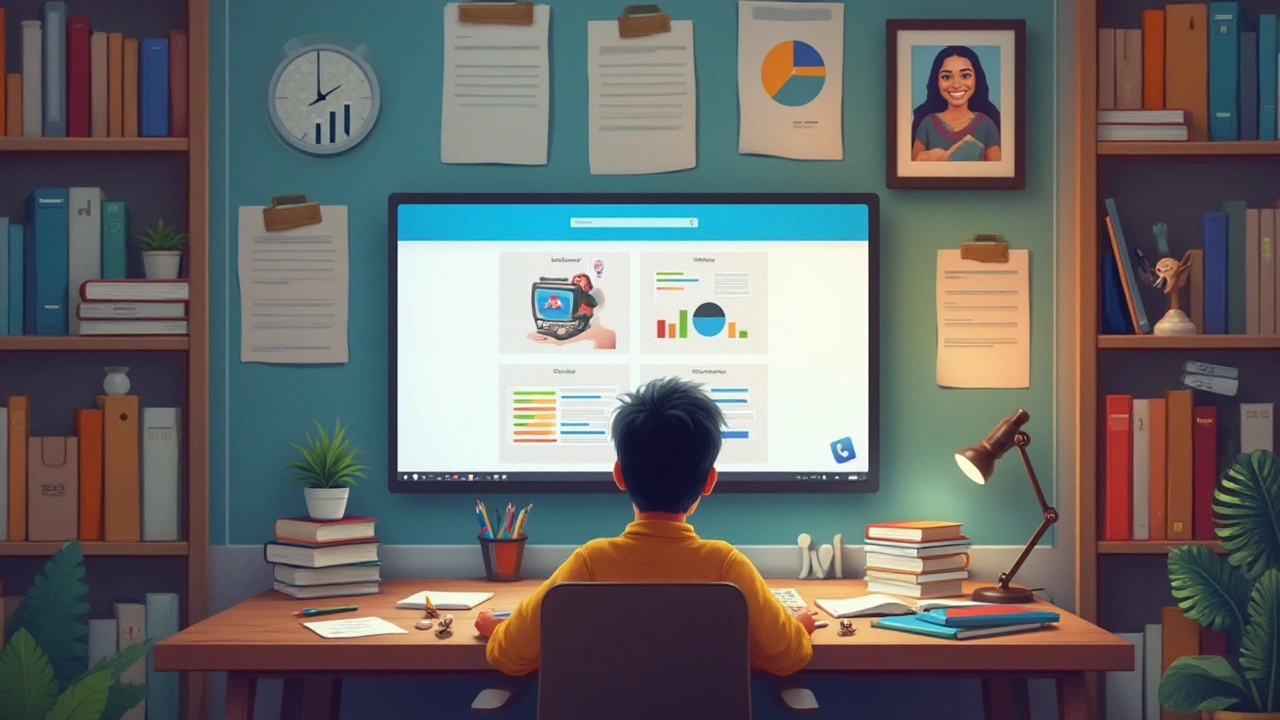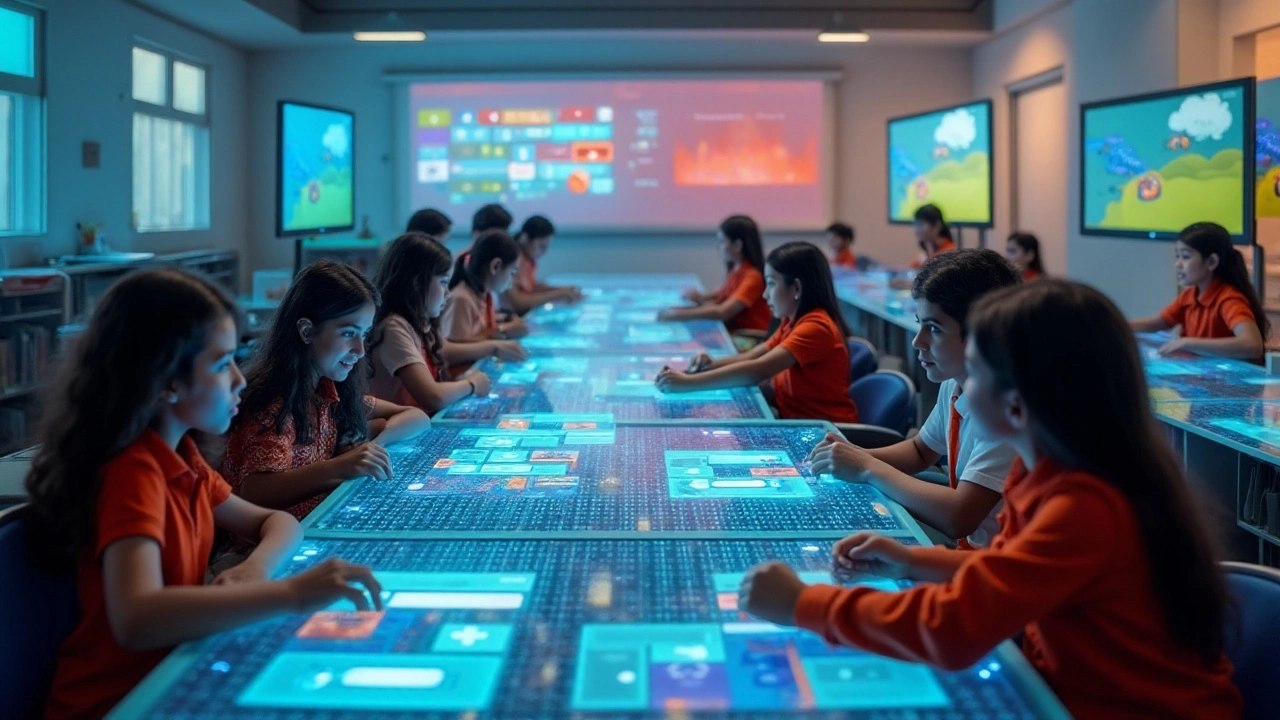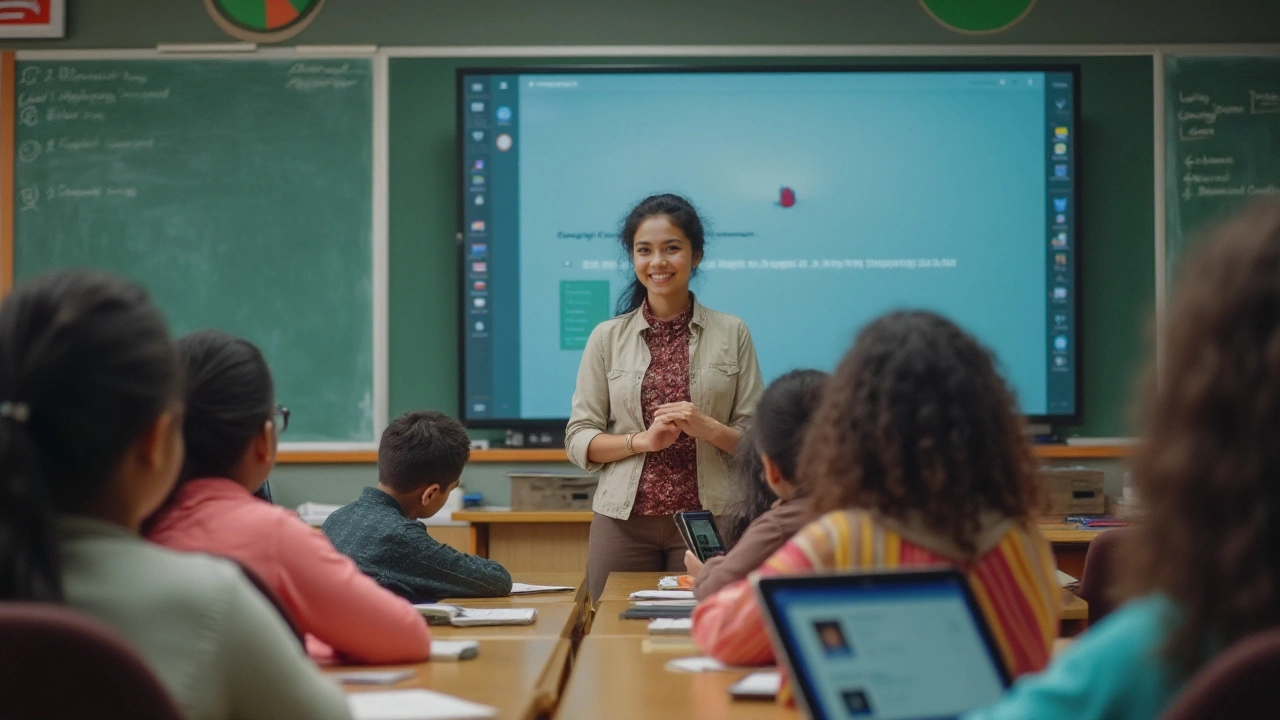In the realm of digital education, Google Classroom has become a cornerstone for many schools and teachers. With its user-friendly interface and integration with other Google services, it has provided an effective platform for remote learning and classroom management. But recently, rumors have swirled about potential changes to this much-loved tool.
Understanding the fate of Google Classroom is essential for educators who rely on it for daily teaching. Whether you're new to the platform or a seasoned user, taking a closer look at its current standing and future possibilities can help in planning and preparation. So let's uncover what lies ahead for Google Classroom and how it might influence the educational landscape.
- Current Status of Google Classroom
- Impact on Education
- Potential Alternatives
- Future of E-learning Platforms
Current Status of Google Classroom
In recent years, Google Classroom has undeniably transformed how educators and students interact in the educational sphere. With the increasing shift towards digital learning, the platform emerged as a robust tool for teachers to distribute assignments, organize curriculum, and foster communication in a virtual setting. As of January 2025, Google Classroom remains an active and integral part of many educational institutions worldwide, sparking curiosity about potential future developments or discontinuations.
One of the aspects that make Google Classroom viable is its seamless integration with other Google services like Drive, Docs, and Calendar. This connectivity ensures tasks are streamlined - teachers can create, distribute, and grade assignments with ease, while students can receive timely feedback and stay organized. Google has continually updated Classroom to adapt to the changing needs, including rolling out features that support hybrid learning models. As of late 2023, Google even introduced more sophisticated features like progress tracking and expanded analytical tools.
A pivotal question among educators revolves around any signs of discontinuation. Google's tradition of evolving its products often ignites speculation. Yet, as of now, there has been no official announcement hinting at the end of Google Classroom. On the contrary, Google has reiterated its commitment to enhancing the platform, seeing it as a fundamental component of their educational offerings. This promise from Google is reflected in user reviews and the significant investment the company continues to make in its software capabilities.
Emily Friedman, a technology education expert, mentioned, "Google Classroom is not just an app but a community where innovation in education truly thrives. Its ongoing updates reflect Google's understanding and responsiveness to educational dynamics."
A look into user demographics reveals insightful numbers. As per the recent statistics, Google Classroom enjoys predominant use in over 100 countries, serving more than 180 million educators and learners. These figures underscore not only its popularity but also its global reach and impact. With these numbers soaring, it's clear that the education sector regards Google Classroom as a vital tool in modernizing learning experiences. But as competitive ed-tech platforms arise, Google's commitment to introducing new features and maintaining its position as a leader in the digital classroom space is crucial.
The landscape of e-learning is ever-evolving, with platforms needing to adapt rapidly to stay relevant. Google Classroom is no stranger to updates focused on accessibility, such as providing tools for students with disabilities or non-English speakers. This continuous innovation suggests no halting in Google's educational endeavors anytime soon. As educators plan for the future, keeping an eye on Google Classroom's developments could ensure they are leveraging the best tools available for their students' success.

Impact on Education
The influence of Google Classroom on modern education has been profound. Since its inception, educators have embraced its utility in providing an accessible and efficient means of managing classroom activities in a digital format. The platform has revolutionized how teachers distribute assignments, offer feedback, and engage with students in an online environment. This transformation is particularly significant in a world where technology increasingly intersects with education. The convenience, savings on resources, and increased engagement are undeniable, making traditional methods appear outdated.
One of the most substantial changes is how e-learning platforms have shifted the focus from teaching centric to learning centric. Google Classroom empowers students by giving them access to a repository of educational materials that can be revisited at their convenience. This newfound freedom to pace their own learning results in improved comprehension and retention, fostering a more tailored educational experience. It also encourages collaboration through easy sharing capabilities, making group projects and peer feedback simpler and more effective.
Additionally, Google Classroom has contributed to bridging learning gaps across diverse socio-economic backgrounds. With just internet connectivity and a device, students from various parts of the world can access educational content that was once limited to traditional institutions. This democratization of information is a pivotal step toward educational equality. However, it underscores the ongoing digital divide issues, reminding us of the necessity for more inclusive technological growth. According to a report by Education Week, "62% of surveyed teachers believed that technology like Google Classroom helps students grasp subjects more profoundly beyond the traditional classrooms."
The ripple effects of these education technology tools are seen not only in student engagement but also in the professional development of educators. Teacher roles have evolved, integrating technology to establish seamless communication WITHIN the classroom and to collaborate with fellow educators. This ongoing learning curve has helped teachers stay current with educational trends while gaining new skills relevant to today's digital age.
Looking to the future, online teaching platforms like Google Classroom are poised to remain central in education, particularly if they continue to adapt and innovate in response to changing educational needs and technological advancements. However, the rapid pace of tech evolution means there's uncertainty about how they'll scale, adapt, or possibly even be overtaken by more advanced tools. As academics, educators, and tech developers continue to analyze the best routes for e-learning, platforms such as Google Classroom see an ongoing dialogue regarding their roles, emphasizing their distinct impact on education is crucial.

Potential Alternatives
As conversations swirl around the longevity of Google Classroom, educators and institutions are exploring other platforms to ensure uninterrupted learning experiences. Whether or not these speculations hold true, it's always wise to have a backup plan. Luckily, the industry offers a wealth of options that cater to different teaching styles and educational needs. Some alternatives might even offer features that could transform your teaching approach in innovative ways.
One of the most popular alternatives is Microsoft Teams for Education. With its seamless integration into the Microsoft ecosystem, educators can access a robust suite of tools designed specifically for educational purposes. The platform provides flexible communication options, enabling direct chats and video calls. What's particularly appealing is its ability to integrate with OneDrive for file sharing, alongside many third-party educational apps. A recent report on digital education platforms highlighted that Microsoft Teams usage increased by 100% in educational institutions worldwide during the last academic year.
Another alternative worth noting is Schoology Learning, which is known for its collaborative features. The platform offers detailed analytics and reporting tools, which can help educators track student progress with ease. Schoology also supports integration with various systems, making it a flexible tool that aligns with existing educational structures. Its interface, which resembles social media networking, allows students to communicate and collaborate effortlessly. One educator said,
"Schoology brings students and teachers together like never before. It's like the social network of learning!"This social aspect may foster increased student engagement and participation.
Moodle shines as an open-source platform with a high level of customization. Institutions with programming resources or IT teams often favor Moodle for its flexibility and control. It offers a variety of educational activities through a modular design, allowing educators to tailor courses to fit specific subject requirements. The interface may require some getting used to, but those who have embraced it often praise it for its adaptability and depth.
If you're looking for simplicity combined with strength in learner analytics, consider Canvas. It's an LMS that provides educators with user-friendly course design tools and in-depth progress tracking. Canvas’s open API support allows for a vast range of integrations, which can enhance the teaching and learning experience. Many educators appreciate its intuitive layout and clean design, which makes it easy for students to immerse themselves in learning content without the distraction of a cluttered interface.
It's crucial for educators to research these platforms and test them out if possible, before making a significant transition. Each system has its own strengths and could provide unique benefits depending on the context of use and existing infrastructure. With countless choices available, the possibilities for tailoring the educational experience to fit specific classroom needs are endless. As technology evolves, staying agile and adaptable ensures that educators remain at the forefront of the digital learning landscape.

Future of E-learning Platforms
The landscape of e-learning platforms is continuously evolving, adapting to the rapid advancements in technology and changing educational needs. Over the past decade, we've seen an increased integration of technology in the classroom, a trend that has only accelerated with the global shift towards remote learning. The future of these platforms, including giants like Google Classroom, seems promising yet unpredictable. With the rise of artificial intelligence and machine learning, e-learning tools are expected to become more personalized and adaptive, catering to the unique learning styles and paces of students. Imagine a classroom where students receive custom-tailored content that helps them grasp complex concepts with ease. This is not merely a dream but a tangible possibility as AI technology advances.
Another significant trend shaping the future is the increasing demand for collaboration and interactivity within e-learning environments. Platforms are exploring ways to facilitate real-time interactions among students and teachers, making learning more engaging and effective. This trend is driven by the recognition that education is not just about content delivery but also about discussion, debate, and shared understanding. Companies are racing to innovate, looking at technologies like augmented reality (AR) and virtual reality (VR) to create immersive learning experiences. Such developments aim to bridge the gap between traditional in-person education and online learning, offering a hybrid model that takes the best of both worlds.
According to a recent report, the global e-learning market is expected to reach nearly $375 billion by 2026, illustrating the sector’s explosive growth and potential. A significant contribution to this growth comes from corporate sectors that are increasingly investing in digital training solutions for employees. Due to this, many e-learning platforms are expanding their offerings to include not just K-12 education but also higher education and professional development. This broad approach uniquely positions them to cater to various needs and industries, a diversification strategy that might shape their future success.
"The growth of e-learning platforms is a testament to the digital revolution in education, emphasizing the need for continuous adaptability and innovation," remarked a leading educational technologist.
Looking ahead, data privacy and security will be crucial in steering the future direction of e-learning platforms. As more personal data is collected and utilized to enhance learning experiences, robust security measures will be paramount to protect students and educators. Maintaining trust in these digital tools is essential for their continued growth and acceptance. Additionally, regulatory frameworks will need to evolve, adapting to new types of content and delivery methods while ensuring inclusivity and equity in education. Clearly, the road ahead is filled with opportunities and challenges alike. As educational needs evolve, so will the strategies and technologies that support and enhance learning. Educators and platform developers alike must stay informed and responsive to ensure that the future of e-learning remains bright and effective for all learners.

Write a comment